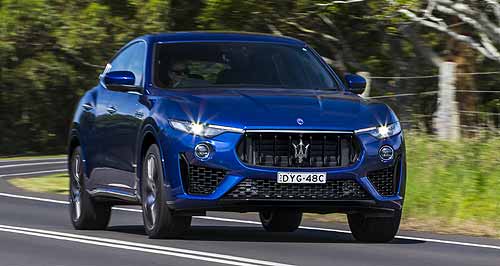Make / Model Search
News - Market Insight - Market Insight 2021Market Insight: Varying fortunes for Italian brandsHigh point: Alfa Romeo achieved an Australian sales record in 2014, thanks in no small part to the Giulietta hatch. Rollercoaster ride for the Italians as Maserati changes up a gear and Fiat idlesGallery Click to see larger images 17 May 2021 By NEIL DOWLING WHATEVER happened to the Italians? Those slightly weird, always interesting cars with an accent on space efficiency and drivetrains laden with clever technology and, for the uninitiated mechanic, a lot of hidden surprises.
Italian cars go back to the very early 20th century in Australia, ebbing and flowing as Italy spread its engineering expertise carried here by immigrants and passionate motoring enthusiasts.
The enthusiasm hasn’t been as strong this century compared with the previous period. A decade ago Australia imported almost 3000 vehicles from Italy, with Fiat and Alfa Romeo at the top of the list followed a long way behind by the romantic and ebullient exotics, Lamborghini, Ferrari and Maserati.
The best year of the past decade was undoubtedly 2014 when 5259 vehicles were imported from Italy.
That was the year the Alfa Romeo Giulietta won almost 2300 owners, when Fiat had its best year in this country – pushed by a revived interest in the new-age 500 and the Panda and Punto – and when Maserati sold more than it ever had, or has, on the allure of its new models including the Ghibli.
While 2014 was the year of the Italians in recent history, it was also the year that precipitated a time of acute accounting that led to car-makers paring back model ranges to concentrate on the most popular ones.
From 2014, for example, Alfa Romeo farewelled the 159 sedan after earlier dropping the Brera and GT coupes. It retained the MiTo small hatch for another year with buyers relying on the Giulietta as the brand’s sole sedan.
It wasn’t until 2017 that the new Giulia was launched and, a year later, its SUV version, the Stelvio with a brand sales total of 1091 units.
By 2018, the model range was four vehicles – 4C coupe, Giulia, Stelvio and Giulietta – which was a far cry from 2011 when seven models filled showrooms and the yearly sales were 1279 units, mostly of the Giulietta, MiTo and 159.
Fiat opened in 2011 with only two models – the 500 and the Abarth 500 – with 432 sales in that year. By 2014 it had added the Freemont (nee Dodge Journey), small Punto hatch and smaller Panda and clocked up 5758 sales.
That was only ever remotely threatened a year later when the range was extended with the Fiat 500X SUV – which shared its platform with the Jeep Renegade – and annual sales were 3945 units.
By 2018 there were three models – joined by the Mazda MX-5 cloned 124 Spider while the Freemont, Panda and Punto had disappeared – and the year collected only 1158 owners.
Maserati started the decade with 140 annual sales in 2011, growing quickly to 401 by 2014 and then really hitting its straps in 2015 with the expansion of the range to include the Quattroporte, Ghibli and the GranSport/GranCabrio coupe/convertible pair with sales for the year of 519 cars.
In 2017, with the Levante SUV in showrooms, sales went to 740 units before slipping to 482 and 467 in 2019 and 2020 respectively, the fall being attributed primarily to the end of production of the coupe/convertible models and the effects of the pandemic.
Maserati is heading for a boost this year on the back of of its recently-launched Ghibli and Quattroporte Trofeos, while the current Ghibli Hybrid is being rolled out and the Levante Hybrid and the MC20 both arrive in the fourth quarter. The coupe/convertible’s replacement is expected in 2023.
The two exotics of Italy, Lamborghini and Ferrari, have had their own sales wave to ride since 2011.
Ferrari ended 2011 with 134 sales and has basically climbed upwards to the 257 record of 2019, pinned back solely by the production constraints at the factory.
Two years ago the Australian company representatives said the queue for trade-in Ferraris was almost as big as that for new cars.
Lamborghini had 25 sales in 2011 and has pretty much grown annually. Its offerings of coupes and roadsters remained the emphasis of its model range until 2018 when the Urus SUV started sales, immediately finding 22 buyers and then upping the ante in 2019 to 77 buyers.
Some came from the two-seater range, as the 77 units sold in 2019 marked a decline in the sportscar sales to 70 units from 112 the previous year.  Read more |
Click to shareMarket Insight articlesResearch Market Insight Motor industry news |













Facebook Twitter Instagram